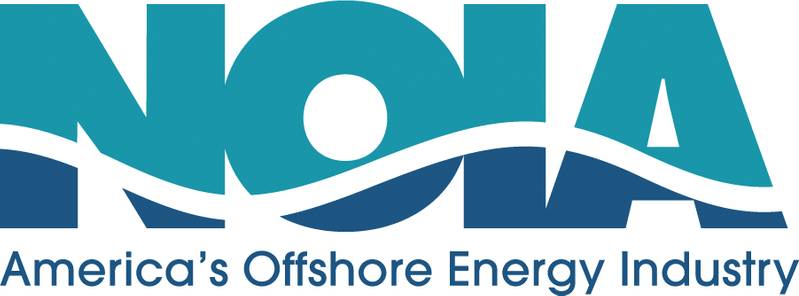Smarter Energy Policy Will Broaden Offshore Recovery
For the past few years, depressed commodity prices, stricter regulatory requirements and competition from onshore development at home and from other countries offering attractive offshore lease and royalty terms have had severe impacts on new exploration in the U.S. Gulf of Mexico. Thankfully, the tide appears to finally be turning.
In August, Gulf of Mexico Lease Sale 251 drew increased competition for offerings and $178 million in high bids, $53 million more than previous sale held in March. The results of the August sale reaffirm the paradoxical state of an offshore energy industry in slow recovery mode; the future is bright, but shifting out of reverse takes time.
The operating environment in the Gulf shows tangible signs of improvement pointing to an industry that is poised to shift into high gear – oil prices are higher, rig rates and supply chain prices are more competitive, companies have improved the efficiency of their operations and revisions to overly burdensome regulations are in the works.
The Trump administration has introduced several major changes aimed at improving conditions offshore, a lower shallow-water royalty rate, upcoming revisions to the well control rule, pending updates to bonding and decommissioning requirements and a proposed expanded offshore leasing program.
In 2017, the Trump administration proposed expanding the offshore areas open to oil and gas exploration to include 90% of the U.S. outer continental shelf (OCS). The proposal includes 47 lease sales between 2019-2022 and would replace the Obama administration’s restrictive 2017-2022 offshore leasing program, which needlessly locks up 94% of the OCS.
The National Ocean Industries Association (NOIA) has long advocated for expanded access to our nation’s offshore resources. Having so much of our OCS closed to oil and natural gas development is incredibly shortsighted and puts the U.S. at a strategic disadvantage, especially as other countries, like Russia, China, Norway, Canada and Mexico are developing energy projects off their shores to meet rising global energy demand.
However, finding and producing oil and natural gas is only half the battle. In addition to increased access to the OCS and more lease sales, the U.S. needs a regulatory regime that encourages offshore energy development and companies need a clear and stable regulatory environment to turn raw resources into the energy that powers our daily lives.
Aiming to encourage producers to increase investment in the Gulf of Mexico, in 2017 the Trump Administration lowered royalty rates in shallow water areas from 18.75% to 12.5%. The deep-water royalty rate remains at 18.75%. The lower shallow water royalty rate seems to be having a positive impact toward revitalizing that segment of offshore energy development. Bidding activity in the August 2018 Gulf of Mexico lease sale showed renewed interest in shallow water tracts.
Progress is also being made towards reversing onerous additional financial security, or bonding, requirements issued by the Obama Administration in 2016. Implementation of the new requirements are currently on hold as the Bureau of Ocean Energy Management (BOEM) works on proposed revisions expected to focus attention on leases that lack a clear and financially secure chain of ownership. The proposal is expected to be issued by the end of this year.
Also expected out this year is a revised version of the blow out preventer (BOP) and well control rule also issued in 2016 by the Obama Administration. After industry expressed concerns that the rule included provisions that did not increase safety, but would rather increase risk, the Bureau of Safety & Environmental Enforcement (BSEE) issued an amended version in May 2018 seeking feedback from industry and the public. NOIA and allied trades submitted comments in August 2018 recommending that BSEE replace a prescriptive drilling margin requirement with a performance-based standard, requesting that BSEE align its proposed BOP revisions with the 21-day testing interval outlined in API Standard 53 4th Edition, and recommending that Real Time Monitoring be applied to operations using subsea BOPs and surface BOPs from a floating rig defined by API Standard 53.
The United States has an abundance of oil and gas and industry has the technology and the know how to tap these valuable resources. However, to keep up with growing energy demands, we will need all forms of energy, including offshore wind. With strong winds, a shallow continental shelf and close proximity to population centers, the Atlantic seaboard is driving strong interest in offshore wind development, and the offshore oil and gas supply chain stands to benefit. In fact, the construction and installation of Deepwater Wind’s Block Island Wind Farm was aided by companies traditionally involved in offshore oil and gas work, including Montco Offshore and Gulf Island Fabrication, proving that offshore oil and gas and offshore wind can thrive together.
While the offshore energy future looks bright, not all segments of the offshore industry are seeing much increase in business currently. Changes must take effect to broaden the offshore recovery. Smart energy policy that includes increased offshore access, a regulatory regime that encourages and incentives offshore energy development will create jobs, spur broad offshore economic growth, strengthen our energy and national security and provide affordable and reliable energy for Americans and our allies.
Randall Luthi is the President of the National Ocean Industries Association (NOIA), an offshore energy trade group located in Washington, D.C.
This article first appeared in the September print edition of MarineNews magazine.



















